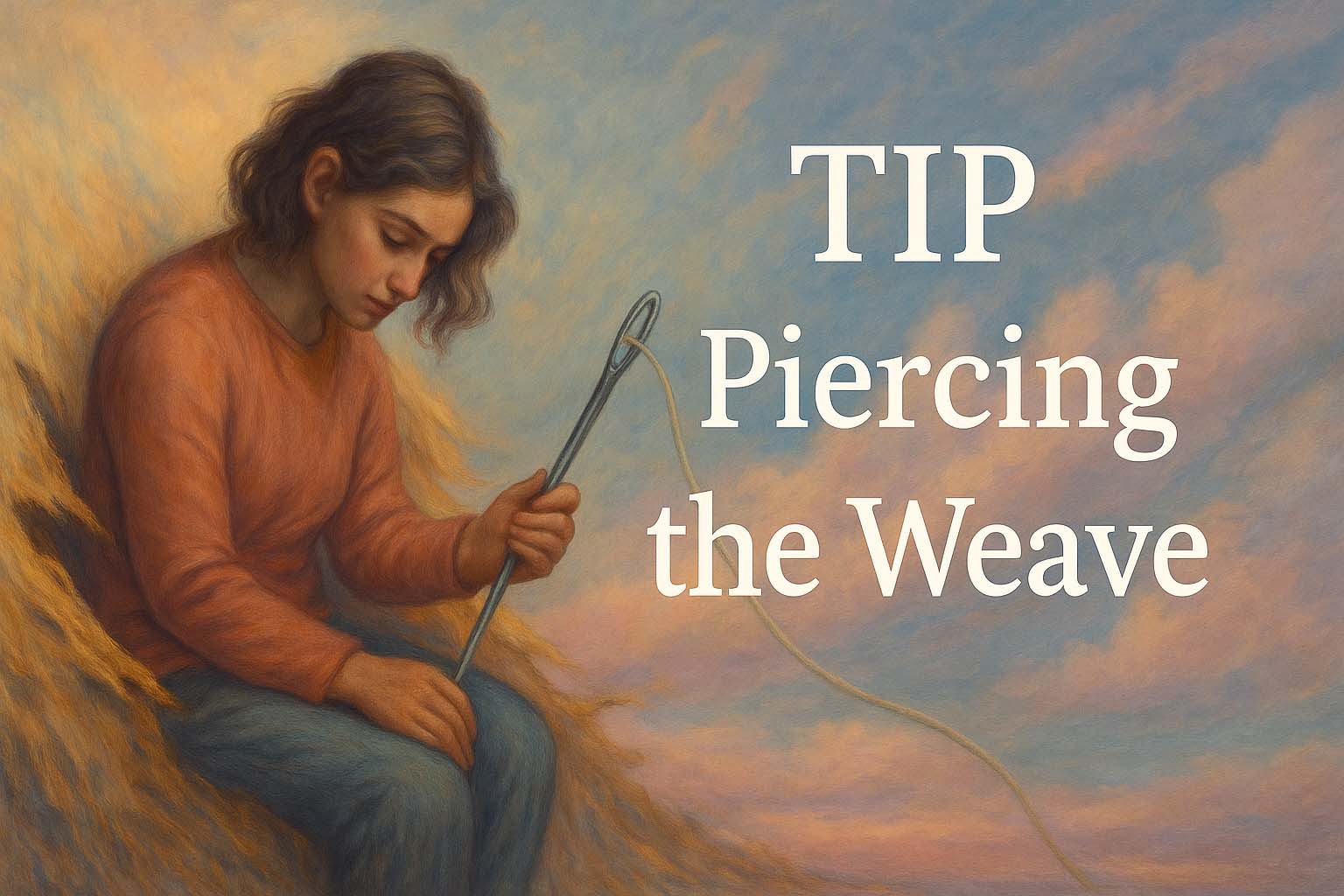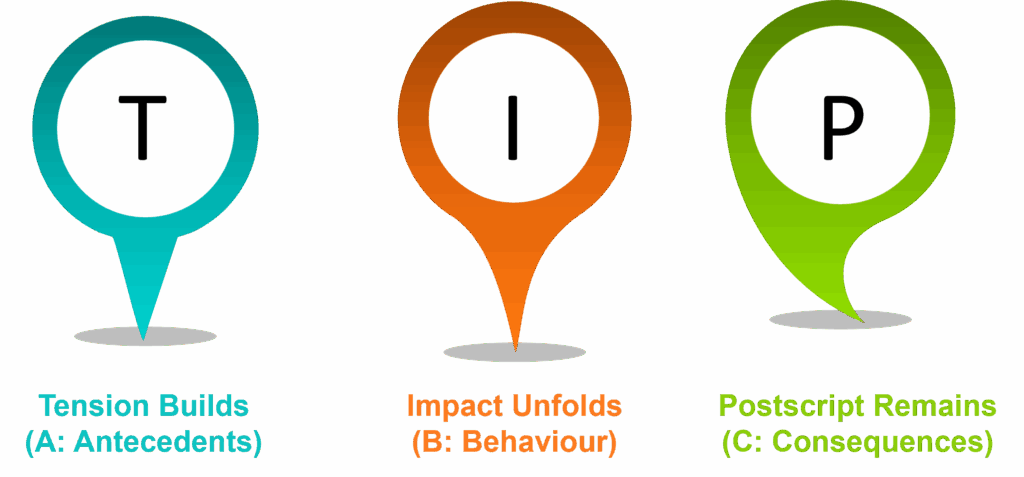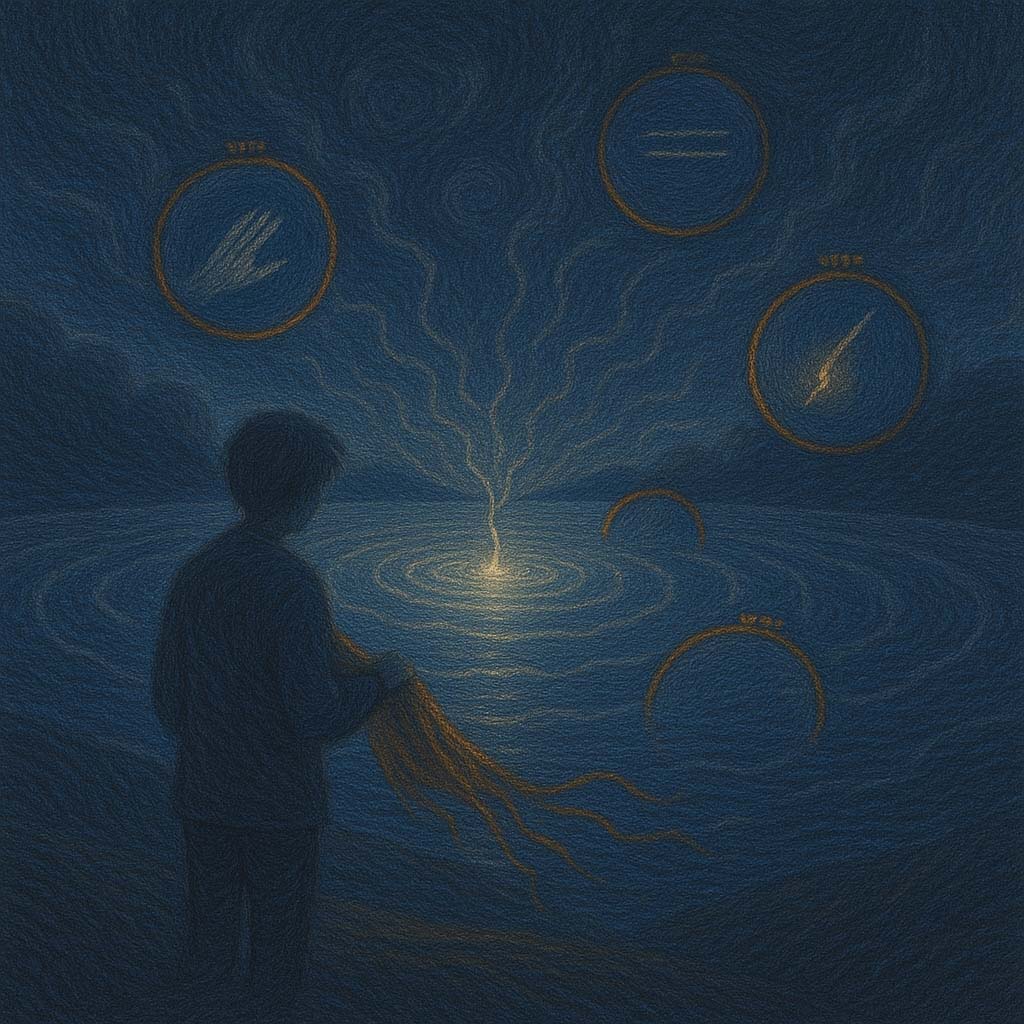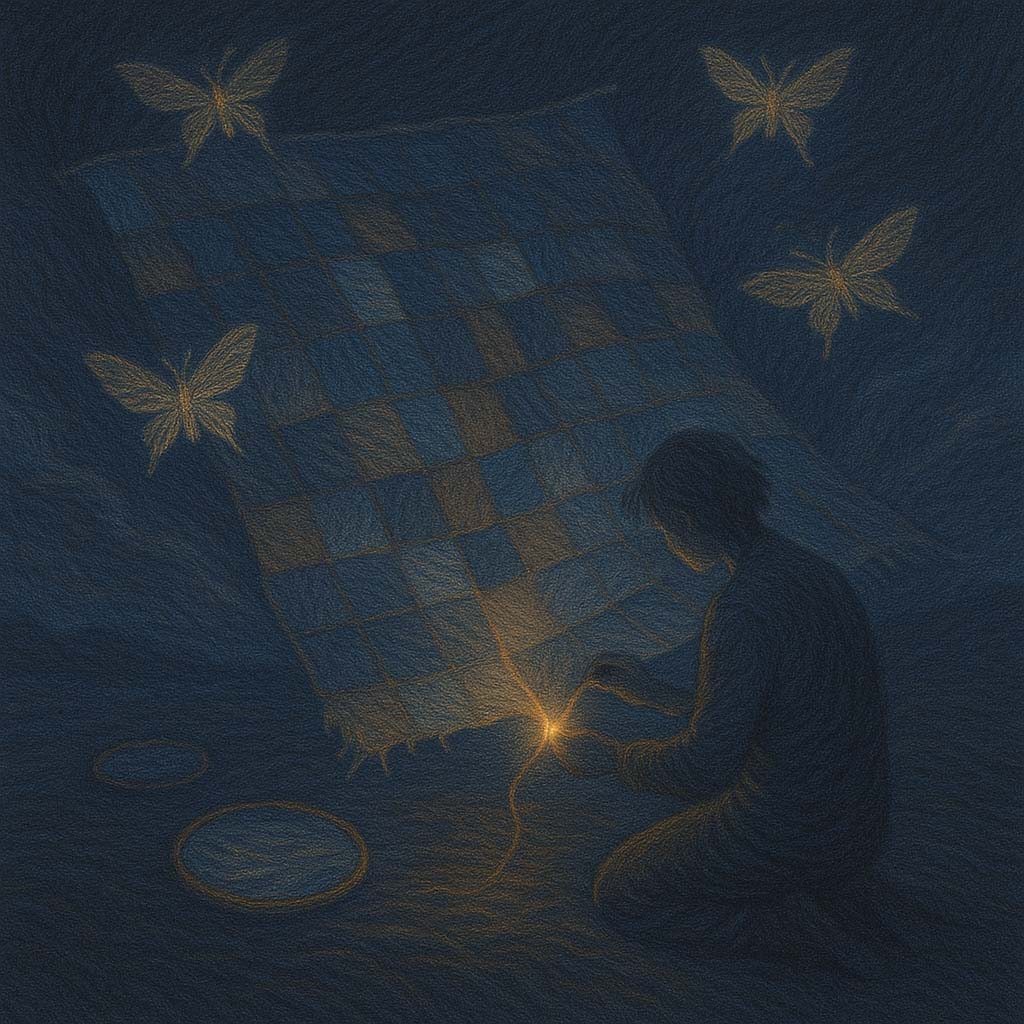

Action: TIP
The Tip of the Needle – Crossing the Threshold
A thread pulled taut finds its sharpest point. The weave strains. The tip pierces through. This phase represents the rupture where ideation and intention sharpen into suicidal behaviour. It’s rarely a single event—it is a culmination. Emotional exhaustion, cognitive collapse, relational fractures, and immediate stressors converge in a moment of unbearable weight. The person crosses a threshold: not always with clarity, not always with finality, but with impact. TIP helps clinicians explore this deeply. It maps three essential strands of the suicide attempt: Tension (what led to it), Impact (how it unfolded), and Postscript (what followed). These are not forensic details—they are emotional contours. We explore them not to interrogate, but to understand: Why now? Why this way? What did it mean? And most importantly: What thread still holds?
TIP offers a structure for relationally exploring suicidal action. It includes:
T – Tension Builds (Antecedents)
I – Impact Unfolds (Behaviour)
P – Postscript Remains (Consequences)
Each strand allows clinicians to walk beside someone who has crossed into action—not to pathologise, but to understand how the weave tore, and whether it can be mended.
T – Tension Builds
Antecedents

Suicidal actions are often preceded by a convergence of triggers and shifts—emotional, interpersonal, cognitive. The weave begins to pull. We ask: “What was happening in the hours or moments leading up to the attempt?” “Was there something specific that pushed things over the edge, or did it feel like everything built up at once?” “Did you make the decision that morning, or did it come suddenly?” “Was there a final straw, a breaking point?” These are not just events—they are moments of intensifying strain. The person might have consumed substances, withdrawn, written a note, or said goodbye indirectly. “Did you try to make sure no one would find you?” “What, if anything, do you wish someone had noticed?” By exploring these strands, we can understand how defeat, entrapment, and hopelessness converged—and how the thread was pulled through the eye.
I – Impact Unfolds
Behaviour

The act itself is saturated with meaning: effort, hesitation, resolve, fear. We do not ask to sensationalise—we ask to understand. “What method did you use?” “Did you hesitate before acting?” “Was there a moment that felt like a point of no return?” “Did you try to avoid being found—or was there part of you hoping someone would stop you?” The Interpersonal Theory reminds us: to act, a person must override the instinct to live. That takes capability—acquired, rehearsed, or born of trauma. “Did you plan for someone to discover you?” “Did you choose a place or time where that was unlikely?” Exploring these moments—when the weave tore—helps us understand how fragile or forceful the action was, and what, if anything, still resisted. “Did anything delay or interrupt you?” “Were there other methods considered?” In the act, we trace not just the rupture, but the rhythm: fast or slow, impulsive or methodical. Every thread matters.
P – Postscript Remains
Consequences

After the act, something remains. Sometimes regret. Sometimes shame. Sometimes numbness. Sometimes a thread of hope. We explore what came next: “Did you call for help after the attempt, or did someone else find you?” “What made you reach out—or not?” “How do you feel now about the fact that you survived?” “Do you still wish the attempt had been fatal?” The aftermath holds clues to ongoing risk—and to resilience. “Have your feelings changed since then?” “What was the reaction of those around you?” “Has anything shifted in your thinking about what happened?” How the person makes meaning of their survival is vital. It shows where the rupture might be mended—or where it’s still bleeding. Some will say they’re glad to be alive. Others won’t. “What do you think stopped you, if anything?” “What, if anything, feels different now?” In the postscript, we don’t force recovery. We honour that the thread still exists—and that it may still be rethreaded, even through pain.
Meet Ethan – Our Roleplay Character
Ethan is a 29-year-old accountant who attempted suicide by overdose after a painful breakup. A neighbour intervened just in time. Now, in follow-up care, Ethan is withdrawn, ashamed, and unsure if he wants to talk. He says very little, except: “I didn’t think I’d still be here.” Your clinical task is to gently walk through the TIP framework: explore the Tension that led up to his action, the Impact of what he did, and the Postscript that followed. The goal is not to push, but to trace. Listen. Honour. Hold the thread, even briefly.
What You’ll Take Away from the TIP Masterclass
- Confidence in exploring suicidal behaviour with empathy and depth
- A clear three-part model (Tension, Impact, Postscript) for post-attempt clinical conversations
- Greater clarity around the timeline, meaning, and volatility of the act itself
- The ability to pace questions gently—open first, clarifying only as needed
Tools to map dynamic and fluid risk factors that led to rupture - Richer understanding of how survival is experienced, and what still holds meaning
- The skills to trace back through the point of action—not for blame, but for insight and future prevention
Join STEPS training to learn how to understand the point of rupture—without losing the person behind the pain.
Because even pierced threads can be rethreaded, stitched, and held.

